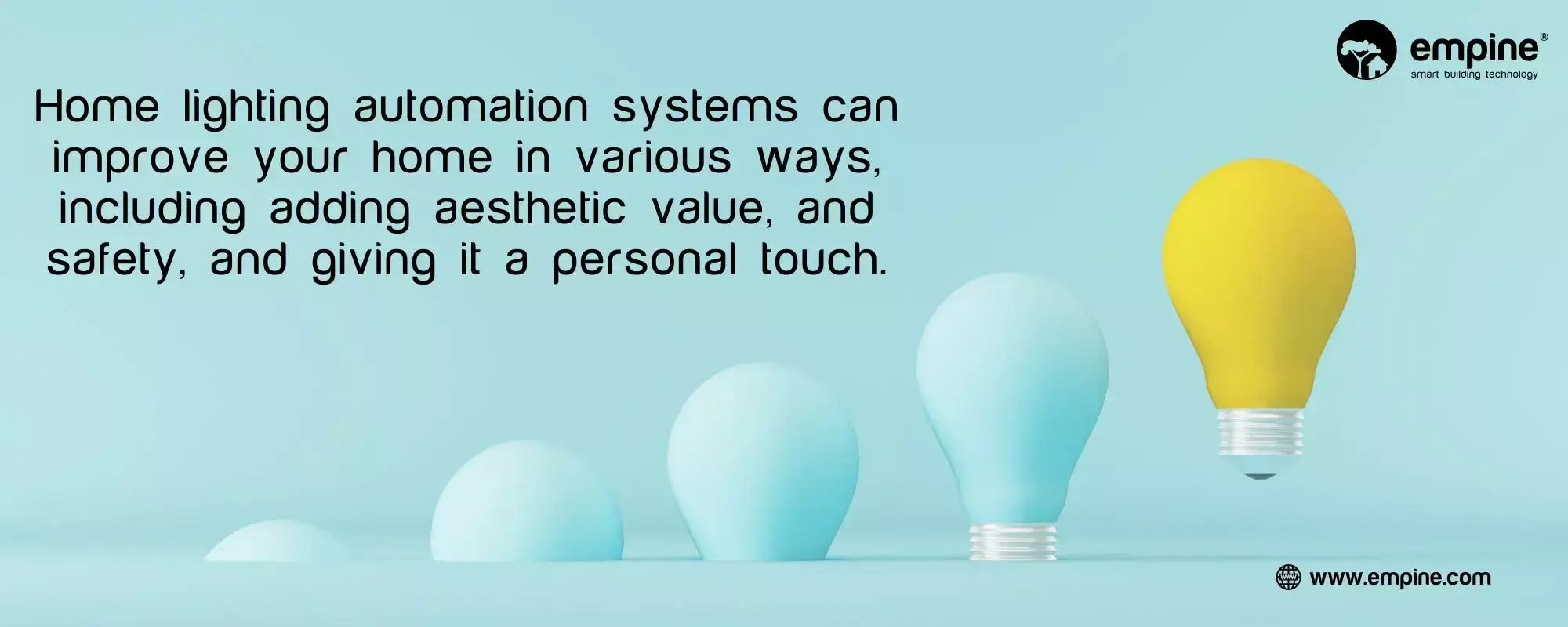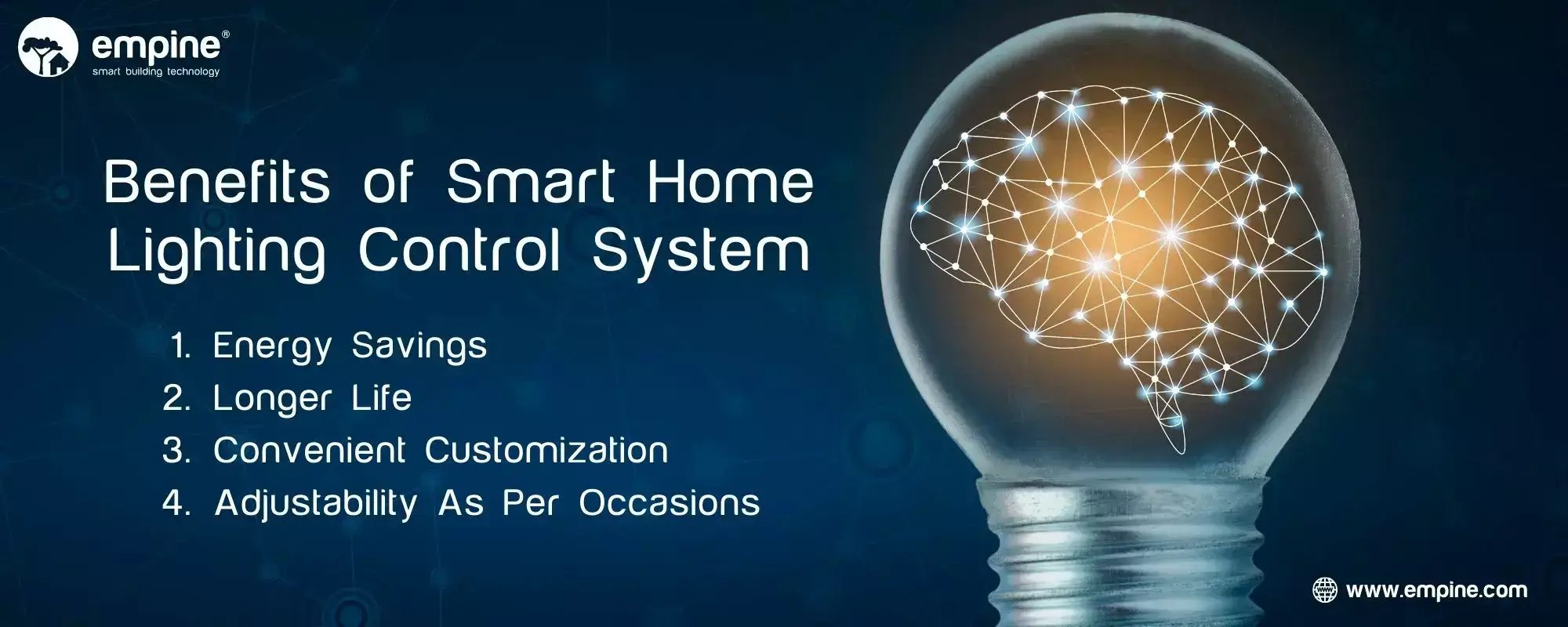As homeowners strive to find new ways to make their homes smarter and more connected, home automation lighting is one of the most popular solutions. This refers to any technology that allows you to control your lights remotely or automatically, whether you’re in the same room or on the other side of the world.
While this may sound like something out of a sci-fi movie, it’s becoming more commonplace as prices decrease and people become more aware of the benefits.
This article looks at home automation lighting, how it works, and some key benefits you can expect from using it in your home.
Let’s get started!
Setting Up Smart Lighting Automation
Setting up lighting automation control in your home doesn’t have to be complicated. While there are many ways to set up an automated lighting system, the equipment is often very straightforward! And with the right technology – plus sticking to a few key principles – implementing these systems can be a snap.
Lighting Control Options for Smart Lighting
Several control options are available to you when creating a lighting scheme in your smart home. These options include:
· Motion Sensors
Most of us are familiar with the concept of motion sensor-controlled lighting; walk into a room, a sensor detects movement, and lights turn on. After a pre-set amount of time with no motion detected (either because you’ve left the room or are head-down in those latest TPS reports) the sensor will tell the lights to shut off.
These are especially useful for reducing electricity consumption as they mitigate the human-error aspect of energy wastage. Forget to turn off the lights, or have kids who race around turning lights on willy-nilly? This type of lighting control prevents lights from staying on all day with no one noticing.
They also act as a way to increase the convenience and safety of navigating your home after dark, which is particularly good for the elderly. Simply getting up in the middle of the night to use the bathroom can trigger the lights. Effortlessly light hallways and the facilities, reduce the risk of tripping and falling in the dark, or even improve your bathroom aesthetic with motion sensor technology.
· Remote and Smartphone Control
Another way to control lighting features in your home is with a dedicated remote control or smartphone app. With a few taps of a button, you can shut off your living room lights for a movie or dim the dining room to set the right mood.
Gone could the days of groggily trudging from room to room to turn off the lights before bed. You can even program out entire lighting schemes, making it easier to set the right tone with just the press of a button.
· Timers and Scheduling
Timed lighting solutions are excellent for home automation needs, including home security, energy conservation, and home comfort. Certain technologies allow you to set a schedule to turn lighting on and off to conform to your daily routine.
When you’re away, this scheduled lighting can create the illusion that you’re home, deterring intrusion and theft. They also help reduce lighting usage if you keep a steady schedule. When you leave for the day, the lights shut off on schedule. Once the sun goes down at the end of the day, they come on again. Smart technologies will even ‘learn’ your schedule based on your usual usage patterns.
· Voice Automated
Remember when “The Clapper” was the pinnacle of automated sound technology? Well, the pinnacle might be a strong word, but we’ve come a long way regarding audio-influenced automation efforts.
Between smart plugs and voice-activated light bulbs, you can seamlessly integrate your home’s lights into your home network. Why fumble around for the switch when you can just ask Google to turn on the lights when you get home in the evening?
Implementation and Connectivity of Smart Lighting
To work properly, your automated lights need to be connected through a control system – a motion sensor or a central hub accessed through your smartphone.
Installation can be a breeze if your home is wired for home automation. Because many home automation systems require special wiring, including many home lighting technologies, it may be difficult to install whole-home lighting automation without it. But we never say never!
Many bulbs on the market require no special wiring to be operated remotely. Whether through your smartphone, a home network, or even an automated dimmer, many of these controls – such as Lutron’s Caséta Wireless dimmers – are easy to install and fully compatible with most home network hubs (including Samsung SmartThings and Google Assistant).
Some single-room systems can be quickly installed in minutes with minimal need for experience with home automation. Others require more expertise, including whole home systems and complex automated controls. It is best to consult with a home automation expert before implementing complicated home lighting schemes.

Ways Smart Lighting Can Improve Your House
Here are a few ways the home lighting automation system can impact your home.
1. Aesthetic Value
Lights that shine at a complete 100 percent level of intensity can seem to be the perfect level to light your home—maybe if you’re trying to find a loose change in the pillows of your sofa. Lights can be set at a lighter intensity to make the interior of your home look better.
2. Safety aspect
Home automation lighting control systems can be programmed to turn on and off automatically, making the house look busy—and less attractive—to burglars.
3. Personality
Much as a fresh coat of paint can add life to space, a smart home lighting system can transform dull houses into spectacular masterpieces.
Benefits of Smart home lighting control system
The best smart home lighting systems save cost, and electricity, have a longer life than basic lights, and offer customization options.
1. Energy Savings
You can save much energy, particularly when using LED lights with thermostats. Often you don’t need maximum exposure from a light bulb, and the dimmer will minimize energy consumption to reduce your power bill.
Besides, it would be best if you switched off the lights you are not using. There’s no point in lighting a room when no one is in it (except for security reasons) because these lamps should switch off themselves.
2. Long Life
The typical incandescent bulb has a lifetime of between 750 and 2,000 hours. On the other hand, smart LED lights will operate for 35,000 to 50,000 hours, making the lights last longer. The power of smart home lighting systems.
3. Adjustable colors as per occasions
This wasn’t always considered the benefit of smart lighting when using LED bulbs. This isn’t just a joke. Changing colors can help when you’re reading, watching a film, or having a small gathering at home. Some stains can minimize eye pressure and enhance sleep efficiency.
And that’s not half of it. Blue lighting can boost your mood, particularly in winter when cloud cover is impermeable, and the sunlight is frightening.

Conclusion
Lighting automation is one of the smart home market’s most exciting and rapidly growing segments. It’s also one of the least understood, which is why we wanted to take a closer look at it in this blog post. We hope that after reading this article, you have a better understanding of what lighting automation is, how it works, and some of the benefits it can provide.
If you have any questions or want more information, don’t hesitate to contact us. We love talking about all things smart homes!